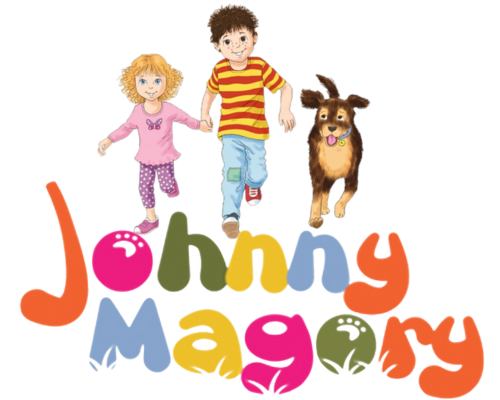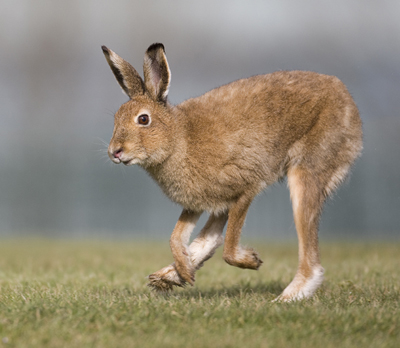Need some inspiration to get your kids outdoors this summer and connect with nature? We are here to bring you some amazing facts with our ultimate Irish Wildlife staycation guide!
Here at Johnny Magory HQ we are obsessed with Irish Wildlife, and now with elements of lockdown lifted, we are delighted to be able to get back and explore our surroundings which means one thing…. Animal, bird, and bug spotting! Hooray!
We’ve compiled a collection of my favorite Wildlife species to help you out when you and your Little Explorers go on adventures, especially now that most of you will be taking a staycation and holidaying in our beautiful island this summer!
So whether you travel the Wild Atlantic Way, Ireland’s Ancient East or Ireland’s Hidden Heartlands, we’ve got some wildlife for you to watch out for.
Keep us updated on your adventures and what Irish wildlife you come across by tagging us on Instagram, we’d love to see what animals, birds and bugs you find along the way!
Pine Marten or as Gaeilge, An Cat Crainn
Starring in Johnny Magory and the Forest Fleadh Cheoil.
This animal is the rarest of all mammals in Ireland with an estimated 2,700 in the wild. They are stunningly beautiful and here are some key facts.
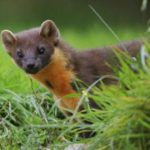 1. Identifying feature:Cat sized, brown fur, yellow throat patch, long bushy tail
1. Identifying feature:Cat sized, brown fur, yellow throat patch, long bushy tail
2. Number of young:2-3, called kits, born March to April
3. Diet: Berries, fruits, small mammals, invertebrates, birds and amphibians.
4. Habitat: Requires forest or scrub habitat that provides cover.
5. The Pine Marten is a protected species and were protected under law in 1976. This has helped numbers increase across Ireland. The pine marten is related to the Irish stoat, otter and badger (the Mustelid family).
The Wren or as gaeilge, an Dreoilín
Starring in Johnny Magory and the Forest Fleadh Cheoil.
Although small, they are known as the king of the birds and here’s some fact about them.
 1. The wren is one of Ireland’s smallest birds. Wrens are readily recognized by their rich brown plumage and short cocked tail which they flick repeatedly.
1. The wren is one of Ireland’s smallest birds. Wrens are readily recognized by their rich brown plumage and short cocked tail which they flick repeatedly.
2. They usually only fly short distances in a steady straight line with rapid wing beats.
3. A wren’s diet is largely based upon insects and spiders. They are particularly partial to beetles hence the reason that they usually feed close to the ground.
4. Wrens there relatively long bill to probe into nooks and crannies on the ground. This may explain their Latin name Troglodytes which means cave dweller.
5. A wren’s nest is made from grass, moss and leaves. The male builds the main globe-shaped nest in a tree, ivy, bush, wall, bank, or an open-fronted nest boxes. He will build a number of nests from which the female chooses one. When she makes her choice she completes the nest construction by feathering the inside.
6. Traditionally in Ireland the 26th December is known as Lá an Dreoilín or Wren’s Day.
The Red Deer, or as Gaeilge An Fianna Dearga
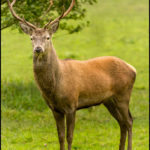
Starring in Johnny Magory and the Game of Rounders and Johnny Magory and the Forest Fleadh Cheoil
1. The Red Deer is Ireland’s largest land mammal and is the only species of deer that is considered native to Ireland. They earned their ‘native’ or indigenous status, as they are believed to have survived our last ice age or are the closest living population to the post-glacial native Irish Red deer.
2. The antlers which are only grown by the males are the most characteristic feature of the species.
– They are shed and re-grown each year and have a distinctive branching design which form a curved heart shaped appearance when viewed from the front.
– Mature stags can develop up to twelve points known as tines on the antlers which are used as a reflection of their social standing.
– When the antlers are being grown they will be covered in a skin like velvet which is frayed off on tree trunks in time for the rutting season.
2. They are mainly grass grazers in open habitats who will also eat herbs, tree shoots, acorns and fruits. They will strip bark from the trunks of spruce and sallow tree types to gain access to the inner more nutritious material and will also browse the lower leaves of heather, oak and holly up to two meters from the ground.
3. Killarney National Park has the last intact herd of native Irish Red Deer as other herds have breed with different species.
The Badger – The Irish name is Broc (One of our favorites!)
 Starring in Johnny Magory in the Magical Wild and Johnny Magory and the Forest Fleadh Cheoil
Starring in Johnny Magory in the Magical Wild and Johnny Magory and the Forest Fleadh Cheoil
1.They have a stocky powerful body with relatively short legs and a short tail. The distinctive head is white with two black stripes through the eyes from the muzzle to the ears. Body appears grey overall but it’s actually black and white hairs.
2. Litter size usually 2-3 cubs, born late January through to early March.
3. Their diet consists of crane fly larvae, moth larvae, wasps, bees, frogs and earthworms, but they will take all manner of invertebrates, small vertebrates, and a variety of plant food.
4. Badgers have a wide variety of habitat types, but generally associated with pasture, woodland, scrub or hedgerow. They do occur in urban areas also, where foraging is available and disturbance is minimal.
5. A badger lives in a sett. Some can possess 300m of tunnel and 20 or more chambers.
6. Badgers in the wild rarely exceed six years in age but maximum life expectancy up to 14 years.
7. Badgers are protected under the Wildlife Acts (Wildlife Act, 1976; Wildlife Amendment Act, 2000), and in Northern Ireland under the Wildlife (N.I.) Order of 1985. Also protected under Appendix III of the Berne Convention.
The Hare – The Irish name is Giorra
Starring in Johnny Magory and the Game of Rounders
1. They are one of Ireland’s longest established indigenous Irish Wildlife animals and are much larger than rabbits with a more upright stance.
2. Their eyes are large and set in the sides of the head allowing for a wide field of vision which is close to 360 degrees.
3. When running they have a top speed of 70kmp or 43mph and can change direction sharply to outwit predators.
4. They do not burrow underground but occupy ground surface dens called forms in sheltered areas of flattened vegetation under heather and long grass.
5. The life span is a maximum of 9 years.
6. They are native to Ireland and they have been present in Ireland as far back as 28,000BC
7. The hares are steeped in Irish legend/ folklore and Irish mythology as shapeshifters.
8. There is a legend that the Celtic warrior Oisin hunted a hare, wounding it in the leg. Oisin followed the wounded animal into a thicket where he found a door leading down into the ground. He went in and came to a large hall where he found a beautiful young woman sitting on a throne bleeding from a leg wound. He vowed to never hunt or eat a hare from that day.
10. The term “Mad as a March hare” stems from the fact that male hares will fight or “box” during March which is their primary mating season.
The Heron -The Irish name is Corr Réisc
Starring in Johnny Magory and the Wild Water Race
“Kind of like a grey flamingo”; that’s how we describe the stunning heron to children when we’re talking about Irish Wildlife!
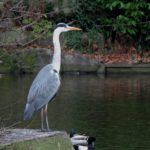
1. The oldest recorded bird was 23, but the average life expectancy in the wild is about 5 years.
2. With it’s long neck and long legs it is impossible to confuse with another Irish bird although some still call them cranes.
3. The Crane became extinct in Ireland only in late medieval times, sometime between 1540 and 1600.
4. They are most often observed alone by the banks of rivers, canals, lakes, the coast and# wetlands however where feeding is good they may congregate in relatively large numbers.
5. Their diet consists fish, frogs and other amphibians, ducklings, other birds, and small rodents such as mice. They’ve been known to enjoy the odd goldfish or two from garden ponds! They are clever and sometimes toss seeds or fruit in the water to attract fish.
6. Herons are a wading bird generally avoiding swimming whenever possible.
7. A grey heron’s nest is made from large twigs and grass & forms a large platform in tall trees built in colonies called a heronry.
8. Herons that breed in Ireland are sedentary however birds from Britain and as far away as Scandinavia join the Irish population for the winter.
9. In Irish mythology both crane and heron are placed as guardians of the treasures of the Otherworld. A beauty named Aoife was turned into a crane by a jealous lover and forced to be a slave to Manannan Mac Lir, the sea god, for 200 years, “always in his house with everyone mocking thee, a crane that does not visit any land.”
When poor Aoife died, Manannan, rather gruesomely, from her skin had made “a good treasure of vessels” such as his shirt, knife &helmet. This crane-bag would reveal its contents only at full-tide, otherwise nothing was visible. The bag was passed on to various gods.
The Otter – As Gaeilge an Madra Uisce
Starring in Johnny Magory and the Wild Water Race
The otter is a very secretive mammal in Irish Wildlife and even though they are plentiful, they are rarely seen.
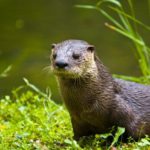
1. Average lifespan is 5 years in the wild.
2. Babies are cubs and there is usually 2-3 in the litter.
3. The otter is a member of the Mustelid family which includes stoats, minks and pine martens in Ireland.
4. Always found by water, otters live by small streams to major rivers, upland lakes to coastal lagoons and sandy beaches.
5. Within its territory (which can be between 2 – 20km) they have a number of resting sites, called couches and underground denning sites called holts, which can be up to 1km from the water source.
6. The holts are natural crevices with multiple entrances. Otters rarely dig their own holts they will use burrows made by other animals such as rabbits and foxes.
7. The entire population is estimated to be in the region of 10,000 adults.
8. Otters that live in rivers and lakes tend to be completely nocturnal, foraging at night or in ‘muddy’ water aided by their highly sensitive whiskers.
9. Otters are principally piscivorous eating salmon and trout but also eel and small fish species such as stickleback.
10. Otters are agile swimmers with the ability to dive underwater for up to forty seconds. They slink through the water only the head and part of the tail is visible.
11. Otters are not particularly vocal but will emit a whistle sound to communicate with more chuckles and chatters being heard during the mating season.
The Swan – or as Gaeilge An Eala Bhalbh
Starring in Johnny Magory in the Magical Wild and Johnny Magory and the Wild Water Race
The mute swan is one of Ireland’s most attractive and recognizable birds in Irish Wildlife
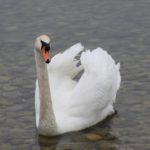
Here’s some facts
1. Average lifespan for a mute swan is ten years but the oldest recorded lived to 28 years and five months in 2012.
2. Female is called a pen, males called a cob and babies called cygnets.
3. The male and female are very similar however the male is larger with a larger black knob on the forehead.
4. Cygnets begin life with grey feathers, then gradually turn brown in adolescence before becoming white, which is where The Ugly Duckling comes from.
5. Their diet is largely based upon water plants. They use their extended neck to reach 1 meter below the water surface to graze but they also leave the water to graze on land vegetation, insects, molluscs and small amphibians.
6. Newly born cygnets are mainly lost to crows, herons, magpies, pike and large perch. Both cygnets and adult mute swans are also the prey of foxes and mink.
7. Vandals, pollution, dogs, overhead cables, bridges, pylons, lead poisoning, fishing-tackle injuries are some of the main threats to swans.
8. Swans generally stay together for life. The divorce rate among Irish swans is around 3% per year.
9. Usually breeding in April, nests are untidy heaps of reed grass and debris beside the water bank; some may be floating.
10. The overall clutch size for Irish swans is seven eggs.
11. Once hatched, the cygnets remain with their mother on the nest for a day or two. Then she leads them onto the water where can swim, vocalise and feed themselves immediately.
12. When danger threatens, a mother will allow the babies climb on her back and shelter under her wings.
Go Explore!
And that’s it! We hope you learned a thing or two about my chosen 8 favorite wildlife from this Irish Wildlife staycation guide. We hope it will inspire you and your little ones to go on a nature hunt soon, rain, wind or shine! Check out The Irish Wildlife website for more inspiration and events nationwide!
And as always, don’t forget to check out our Irish Wildlife Directory and our Wildlife Wednesday Videos for more facts on our beautiful Irish wildlife.
If you need an extra hand to inspire your little adventurers away from screens our Explorer Box is the best way to get your kids excited about reconnecting with Nature and learning about Irish Wildlife!
Emma-Jane and the Johnny Magory Team x
